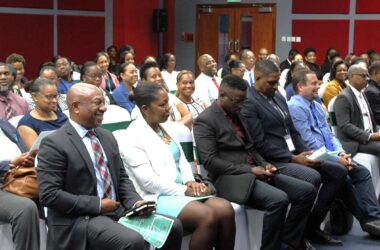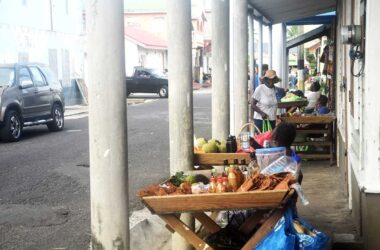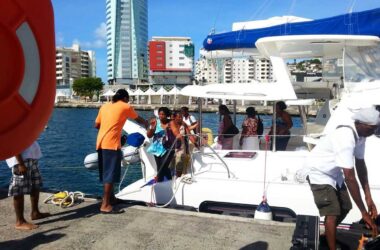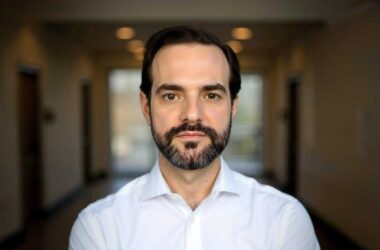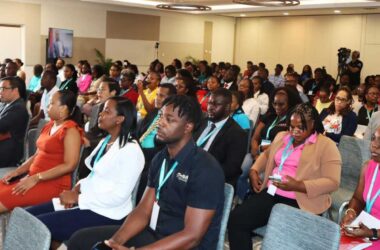
Disclaimer: the views presented are those of the author and do not necessarily represent those of any of the organizations he is associated with. Comments and feedback that further the regional dialogue are welcome at axel.kravatzky@syntegra-esg.com
The six inches of topsoil that human existence and culture depend on has come into focus for two important reasons. First, rising food prices have recently strengthened our resolve, and the necessity, to grow local food instead of relying on imports. Strengthening the regional agricultural sectors has long been a goal throughout the Caribbean; and the recent Agricultural Summit in Guyana has spotlighted increased commitments for regional collaboration.
A second less well known perspective, is that we need healthy, living, topsoil to halt and reverse the climate emergency. Soil, with the living organic matter it contains, binds a lot of carbon. Tilling and the use of pesticides kills the living organisms in soil and releases a lot of carbon, making climate change a lot worse. The reverse is also possible. During COP21 in 2015, the global meeting of governments agreed to limit global warming to 1.5 Celsius and launched the International “4 per 1000” initiative with the aim of showing that agriculture, and in particular soils, play a crucial role for food security and reversing climate change. About 30% of the carbon dioxide that is emitted by humans in recovered by plants through photosynthesis, while about another 26% is captured by oceans.
In the case of soils, we have the opportunity to maintain that carbon storage capacity, and to increase it through agricultural practices that retain the organic material in the soil. Organic matter is created when living organisms in the soil, such as bacteria, fungi or earthworms, transform dying and decomposing plants. If we are able to increase the level of carbon stored in soil by 0.4% per year, we would contribute substantially to climate mitigation as well as better and more secure food supply.
Unfortunately, the business-as-usual practices of industrial agriculture, that rely on tilling, fertilizer and pesticides are driving us down a vicious cycle: tilling damages the soil and releases carbon, we need more fertilizer, apply pesticides to kill pests that thrive in unbalanced environments and that kill off the living organisms that create the organic matter that is vital for topsoil to retain carbon, and which is essential for human nutrition because it retains water, nitrogen and phosphorus, and which in turn are essential for plant growth. As a result, we apply more fertilizers, and pesticides, poison people, animals, and pollute rivers, lakes, and oceans through run-offs.
Business models derived from organizational purpose
There is a growing movement of companies that have decided to act. One instructive example is the case of Patagonia Inc., the California based company named after the region in Argentina known for its wilderness and iconic mountain ranges. The original purpose of the company was to create the best gear and clothing for exploring that type of nature with the least possible harm. About three years ago, Patagonia decided to enter the food business, not because it does not have enough growth potential in the clothing sector, but because they had come to the realization that doing the least possible harm was not good enough.
The true purpose of companies, according to Prof. Colin Mayer of Oxford University, is to develop profitable solutions to the problems of people and planet, and not to profit from producing problems for people and planet – a definition that is consistent with the global benchmark standard for good governance, ISO 37000 Governance of organizations.
In the case of Patagonia, enabling people to explore wild places safely and responsibly with the least possible harm is one part of the solution. But in addition to that, there is the need to protect and regenerate nature. Patagonia “is in business to save our home planet”. That means not only becoming carbon neutral by 2025 across its entire supply chain and supporting over 1000 grassroots environmental NGOs around the world, giving 1% of its sales for the planet, but entering a whole new line of business so as to be able to increase biodiversity, restore soils, and practice regenerative organic agriculture. Regenerative agriculture is not only organic, but it prioritizes building soil health to fight climate change and works to improve the well-being of earth, humans, and animals as an interconnected holistic system.
For the past 10 years, the reinsurance giant Swiss Re has been publishing the SONAR report on emerging risks and new insights. The June 2022 report identifies nine emerging risk themes and five trend spotlights. The highest short term (0-3 years) potential impact risks include (i) challenges in construction due to raw material shortages and price increases, and (ii) thawing permafrost – which will accelerate climate, infrastructure, and health hazards. The highest potential risk more than three years out, is expected from quantum computing; it is expected to be extremely disruptive in the beginning and pose high risks for companies relying on conventional computing, before the opportunities it holds are realised.
Swiss Re points out that emissions from world food systems accounted for 31% of the human-induced total greenhouse gas emissions in 2019 due to the current production methods. The big challenge facing the world at present is how we can radically improve the productivity of agriculture to feed more people, while at the same time reducing emissions and increasing biodiversity. They see the solution in non-conventional farming settings (vertical, hydroponics, soil-free growth, controlled indoor environment), precision agriculture (using IT in farming processes for pest control and farming), intercropping and crop rotation, and decarbonizing the food supply chains (including emissions from transport and packaging, as well as waste control), biofertilizers and microorganisms, and carbon farming.
In order to succeed in agriculture and beyond, we need more organisations, of whatever size, to practice good governance and follow the example of Patagonia – determine what meaningful problems of people and planet they want to address strategically and create profitable solutions for doing so, while ensuring and assuring that they are not profiting from creating harm.

Dr Axel Kravatzky is managing partner of Syntegra-ESG Inc., chair of TTBS/TC309 Mirror Committee, vice-chair of ISO/TC309 Governance of organizations, and the co-convenor and editor of ISO 37000 Governance of organizations – Guidance. He is currently the project leader for ISO 37006 Indicators of effective governance.


